This video is available on Rumble, Bitchute, Odysee, Telegram, and X.
I think the Civil Rights Act of 1964 has caused more damage to the United States than any other law — except one. And that one — here’s a hint — was passed one year later, in 1965.
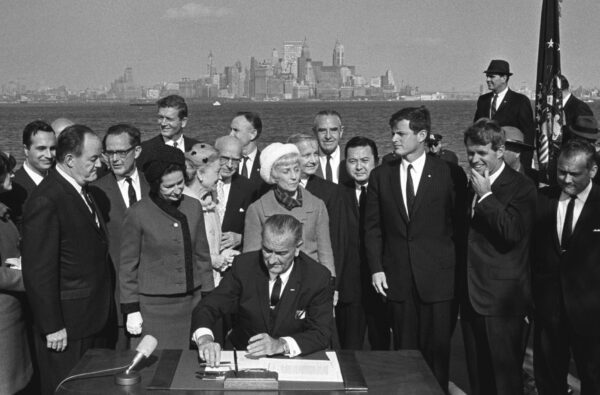
The Civil Rights Act banned private-sector discrimination. An employer can’t reserve jobs only for whites or men, say, and a restaurant or hotel can’t refuse to serve people because of race, sex, religion, national origin, etc. The Civil Rights Act is back in the news because last week — 61 years after it was passed — the US Supreme Court finally decided that its protections apply equally to whites and men and heterosexuals, not just to the liberals’ favorites.

The case was brought by a woman who worked for the Ohio Department of Youth Services. Just look at its home page. I count just one white man here, and “career opportunities” in the bottom left shows two black women.

The department is sure to be full of loonies. Marlean Ames, who brought the case, is a white heterosexual.

She was denied a promotion, which went instead to a black lesbian named Yolanda Frierson.

Plaintiff Marlean was then demoted — that was a $40,000 a year pay cut — and her replacement was a young homosexual named Alex Stojsavljevic, who had been her protégé.

The direct supervisor who demoted Marlean was Genine Trim, a black lesbian.

Ryan Gies, who was also involved in the decisions, is a white hetero, and Julie Walburn, also involved, is another white hetero.


Marlean Ames sued, claiming she was mistreated because she is heterosexual — although I suspect being white didn’t help either. The Oho trial court and the appeals court recognized that if she had been a minority — black or lesbian — her complaint would be strong enough to file suit, but since she was not a minority, she had to have better arguments: She had to show “background circumstances to support the suspicion that the defendant is that unusual employer who discriminates against the majority.”
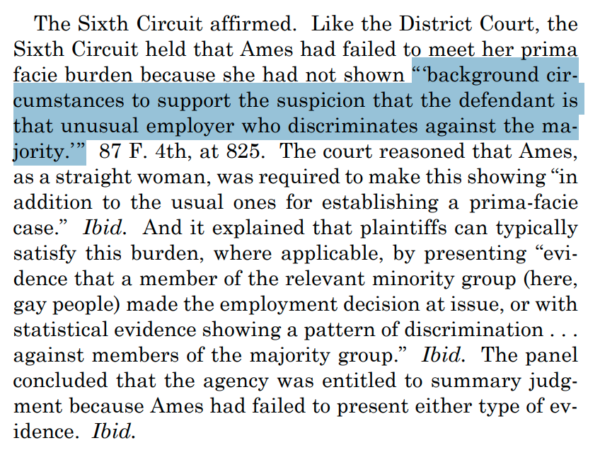
The theory is that discrimination against whites or men or heteros is so rare, so improbable, so unlikely that plaintiffs must have additional evidence of this scarcely believable man-bites-dog claim. This is absurd. For years, anti-majority discrimination has been widespread, often obligatory. That’s what affirmative action and DEI are all about.
The Supreme Court ruling noted that added proof to support a claim of discrimination against a majority person could be “evidence that a member of the relevant minority group [here, gay people] made the employment decision at issue, or with statistical evidence showing a pattern of discrimination . . . against members of the majority group.”
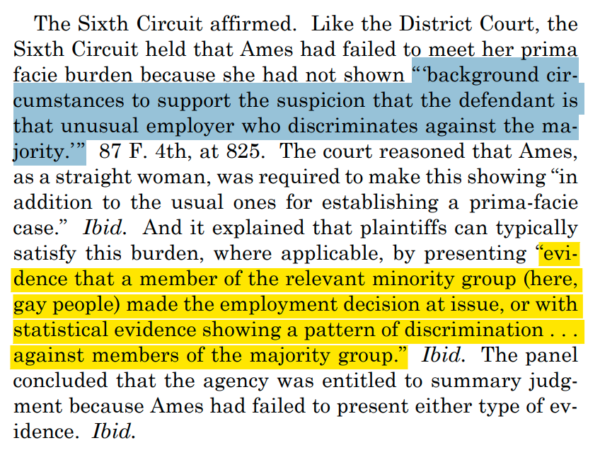
Since Marlean Ames didn’t cite that kind of evidence, her case had been dismissed.
Justice Katanji Brown Jackson — yes, that very one, here covered with cowrie shells — wrote the *unanimous* decision finding in Marlean Ames’s favor.
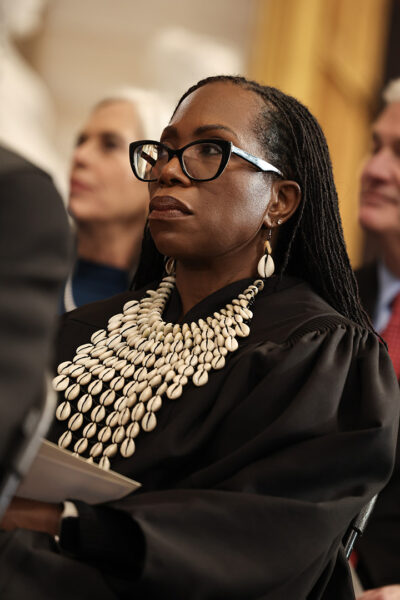
Credit Image: © Chip Somodevilla-Pool/CNP via ZUMA Press Wire
Justice Jackson wrote that this additional burden for majority members was never in the law and was cooked up by courts. The Civil Rights Act prohibits discrimination against everyone equally. This ruling doesn’t mean that Marlean Ames wins her suit; only that it can go forward. If Ohio Youth Services convinces a jury that she was demoted because she was no good at her job — and not because she was hetero — she’ll get nothing.
Still, this is a victory for white people. In the past, it wasn’t impossible for whites to win discrimination cases, but this makes it easier.
When the Civil Rights Act banned discrimination in 1964, we were already supposed to believe that black people were just as smart and hard-working as white people, and the only thing holding them back was racism. Without discrimination, blacks would blossom. They didn’t, because they aren’t as smart and hard-working, so their status hardly changed: They were still more likely to be poor, on welfare, and in jail, and less likely to be doctors or astronomers.

Credit Image: © Nicholas.T.Ansell/PA Wire via ZUMA Press
And so, very quickly, we got perverse outcomes. It was illegal to discriminate against blacks. But the only way a company could prove it wasn’t discriminating was to hire a bunch of them, even if they were incompetent. If you didn’t hire blacks, the government would shout “racism” and drag you through the courts. That’s how a law that was supposed to require equal treatment ended up, in many cases, requiring equal outcomes and intentional discrimination.
Anyone — as I did — who pointed out that the problem wasn’t “racism,” but race differences in abilities or temperament was called a hate monger: kicked off social media, debanked, death threats. Since it was verboten to talk about the real reasons for black failure, the country spent 60 years dreaming up increasingly idiotic ways to blame white people: systemic racism, institutional racism, white privilege, unconscious racism.
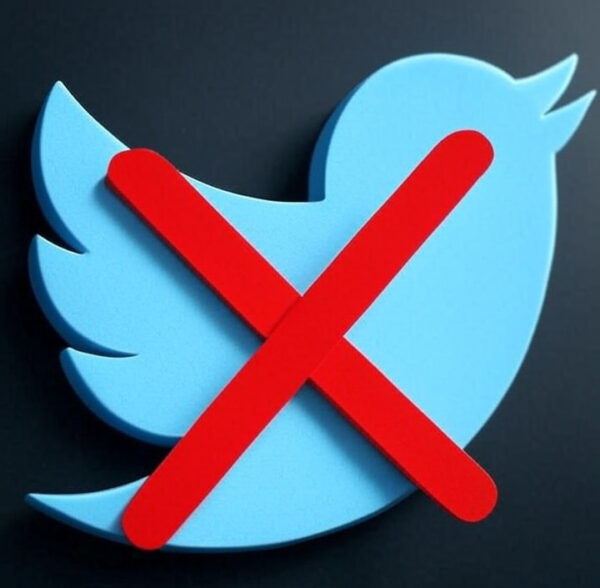
Math is racist, music theory is racist, being on time is racist, bird-watching is racist because not enough black people watch birds.

Credit Image: © Jim West/ZUMA Press Wire
And, of course, it’s the police who make black people commit crimes, so we have to get rid of the police.
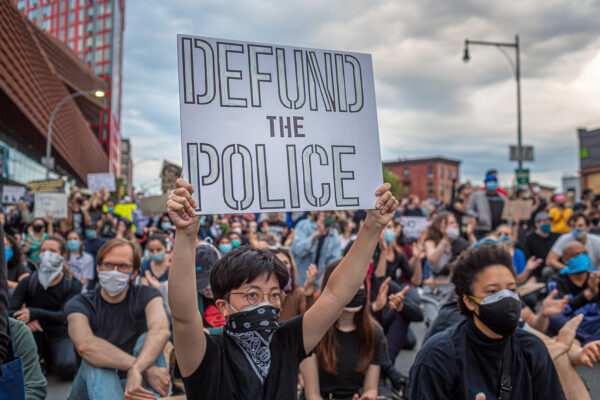
Credit Image: © Michael Nigro/Pacific Press via ZUMA Wire
All this justified blatant, anti-white hiring policies, DEI, and the preposterous idea that discrimination against whites is so rare that white plaintiffs need more proof of it than non-whites.
Hispanics and American Indians and immigrants and homosexuals and transexuals quickly became certified victims of the white-supremacist, hetero-normative, phallocratic, ablest power structure, in which people like me ruthlessly exploit and oppress everyone else without even trying.
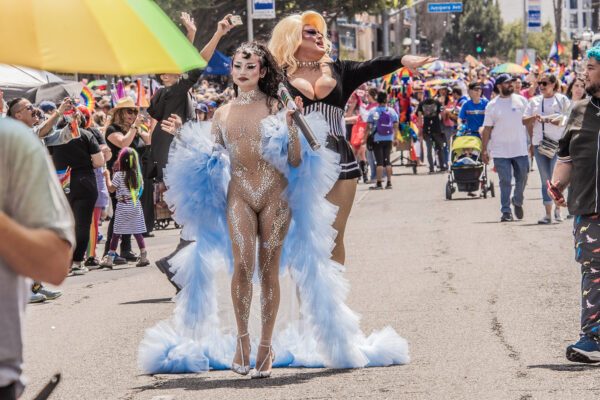
Credit Image: © Alberto Sibaja/Pacific Press via ZUMA Press Wire
So, yes, this is a good court decision: People like me can claim discrimination, just like all the people I’m supposed to be grinding down.
But the real problem is still a triple-padlocked taboo. I want Donald Trump to appoint a blue-ribbon committee to gather the data on race differences in IQ, time preference, criminality, and mental illness, and explain how nutty it is to expect every racial group to end up at the same level, and how *vicious* it is constantly to blame white people for things that aren’t our fault.

Credit Image: © Ting Shen/Xinhua via ZUMA Wire
Imagine how the media would prance and roar and howl. But they’d be forced to deal with facts most Americans have never heard. It would be a wonder to behold.
Does Mr. Trump have the backbone for that? No. But it’s a pleasant thought, isn’t it?
Next week, I think I’ll make a video on why the Civil Rights Act of 1964 should — or maybe shouldn’t — be repealed.
The post Even White People Can Sue for Discrimination appeared first on American Renaissance.
American Renaissance



 R1
R1
 T1
T1


